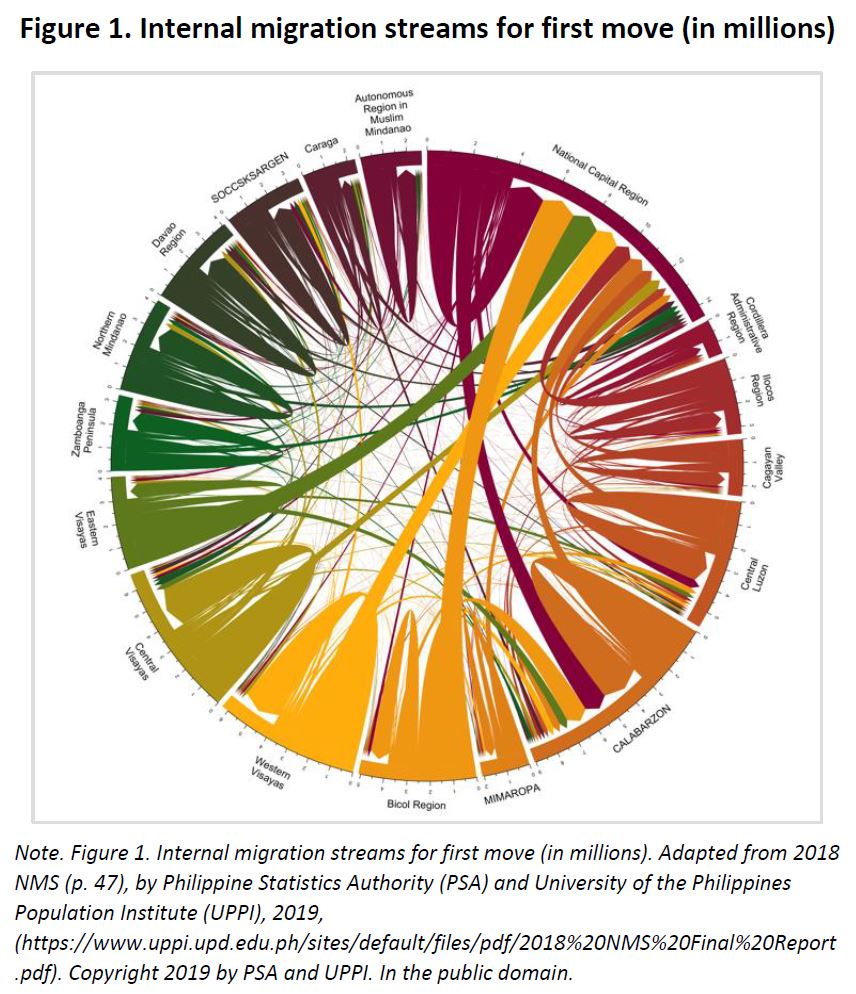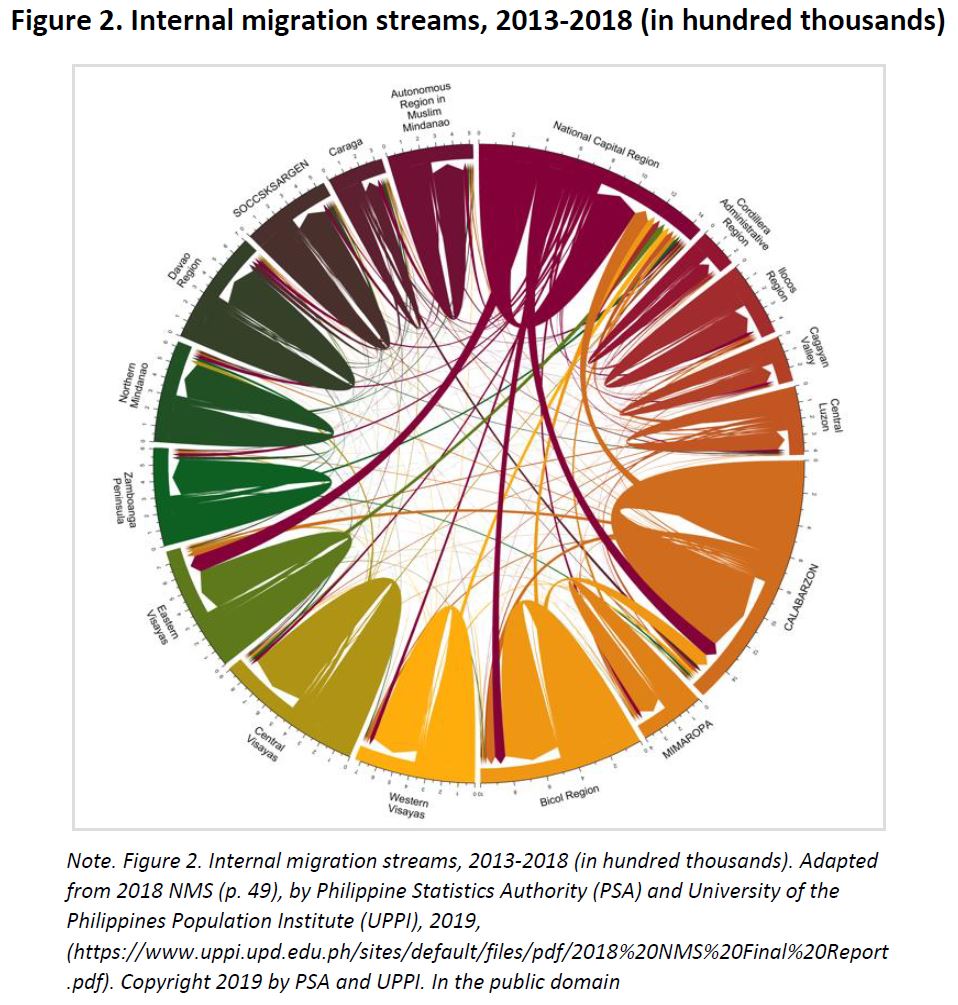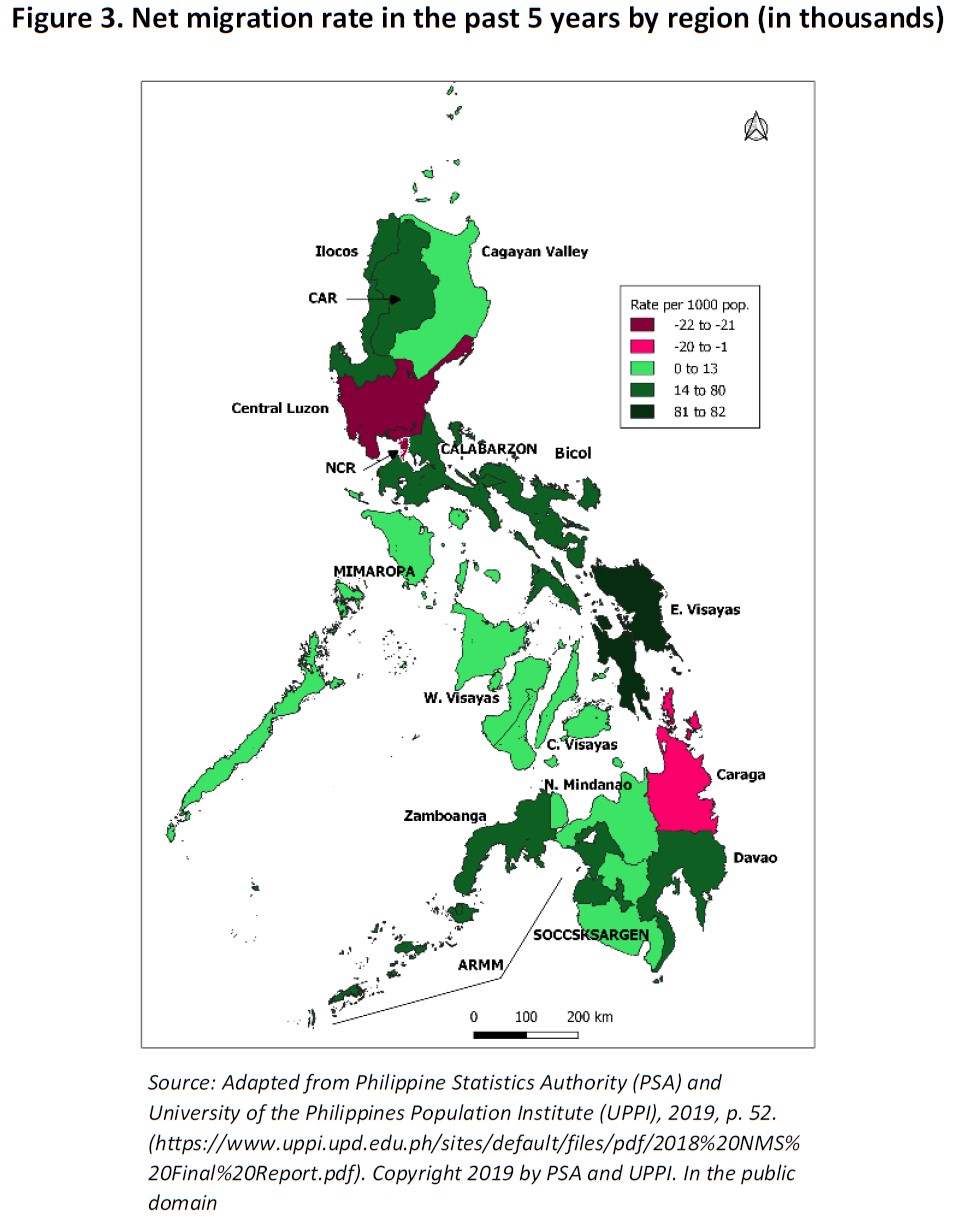
“Balik Probinsya” in time of COVID-19
The University of the Philippines Population Institute (UPPI) in collaboration with the Demographic Research and Development Foundation (DRDF) are sharing results of their demographic studies to provide the Philippine context on the possible effects of the coronavirus disease (COVID-19) pandemic. In both the UPPI and DRDF websites, we are publishing a series of research briefs focusing on various aspects of Filipino lives that are affected by COVID-19, in both the short and long terms.
Download PDF here.
On 6 May 2020, President Rodrigo Duterte signed Executive Order No. 114, s. 2020 (2020) that institutionalizes the “Balik Probinsya, Bagong Pag-asa” program as a pillar for a balanced regional development. The program has identified key areas to achieve its goal of a balanced urban and rural development. These include empowerment of local industries, food security and agricultural productivity, social welfare, health and employment and development of infrastructure.
The regional development perspective has been adopted by previous administrations in national development planning and the idea of encouraging people to settle in the provinces has been one of the strategies explored to decongest the growing metropolises such as the National Capital Region (NCR). As a result, different growth corridors have been identified and developed through time.
Despite decades of regional growth and development programs however, NCR remains the top migrant destination region in the country. Based on the 2015 Census, the region is home to about 13 million residents, roughly 12% of the country’s total population (PSA, 2016b). At 21,000 persons per square kilometer (sq. km.), it is the most densely populated region in the country (PSA, 2016a). In contrast, the rest of the 16 regions have no more than 900 persons per sq. km.
NCR also serves as the gateway to the Philippines, with both international airports and seaports located in the region. A public health crisis such as the ongoing COVID-19 pandemic, thus, puts the NCR in a more vulnerable situation compared to other regions in the country. As of 14 May 2020, 64% of all confirmed COVID-19 cases were from the NCR.
In this research and policy brief, we looked at results of the 2018 National Migration Survey (PSA & UPPI, 2019) to highlight migration patterns of Filipinos and how a program on regional development such as the “Balik Probinsya, Bagong Pag-asa” fits in this narrative.
How does the population of regions grow?
The size of a population is affected by the interplay of three demographic factors, births, deaths and migration. The difference between the first two, that is, births minus deaths results to what is called a natural increase. A population in a region also increases or decreases through migration. In the case of NCR, latest data from the 2017 National Demographic and Health Survey shows that it has a total fertility rate of less than 2 children per woman of reproductive age (15-49), the lowest among all the regions in the country (PSA and ICF Macro, 2018). With NCR’s crude birth rate in 2017 at 16.4 births per 1000 population (PSA, 2018a) and crude death rate of 5.7 deaths per 1000 population (PSA, 2018b), the region’s natural population increase is 10.7. When it comes to migration, results from the 2018 National Migration Survey (2018 NMS) identified NCR as the top migration destination region, and at the same time, the main source of migrants to other regions of the country (PSA & UPPI, 2019).
The 2018 NMS, a survey that interviewed over 45,000 individual respondents 15 years old and over, found that 55% have ever migrated, i.e., have ever lived in a different city or municipality for at least three months. Of these migrants, the majority moved within the country (88%), some outside the country (5%) and the rest experienced both internal and international migration. NCR was the most popular regional destination for first-time migrants followed by CALABARZON and Central Luzon. Figure 1 graphically shows the direction and volume of these inter-regional and intra-regional movements.

The NMS also asked about recent migration or change in residence five years prior to the survey. Among respondents 15 years old and older who have ever experienced migration, 15% have changed residence in the past five years prior to the survey. Majority moved within the country (84%), while a few lived in another country (14%). The rest changed residence both within the country and outside of the country. Of the recent migrants within the country, one-third crossed regional boundaries with NCR and CALABARZON (Figure 2).

Interestingly, NCR, Central Luzon and Caraga have actually lost population in favor of other regions due to migration in the past 5 years (Figure 3). Net in-migration rate is highest in Eastern Visayas.

Why do people move?
Similar to international migration, internal migration is driven by economic reasons. Forty six percent of Filipinos who moved from one city or municipality within the country did so in search of employment. In addition, housing-related reason (e.g., rental issues, bought a house) was the second most common reason cited by respondents. Other reasons for moving are related to life events such as education or marriage.
Majority of internal migrants in the past 5 years are in their prime productive and reproductive ages. More than half (57%) are below 30 years old and a mere 5% are 50 years old and over. They are mostly married (55%) or never married (39%). Thirty-five percent are high school graduates and another 36% did not finish high school. More unemployed have moved within the Philippines in the past five years compared to the employed.
Filipinos’ mobility and the regional development program
Filipinos are characterized as mobile people. In times of crisis, migration has been one of the adaptive strategies employed by Filipinos both at the individual and household levels. To what extent a public health crisis such as COVID-19 will change Filipinos’ migratory behavior remains to be seen.
Will a “Balik Probinsya program” provide some hope? If the idea is to decongest overpopulated regions, it will take more than encouraging and/or providing incentives to people to go back to their places of origin. Some may not even have a place to go back to. It is the desire for better economic lives that compel most migrants to move and as long as cities and highly urbanized areas provide the lure and promise of better opportunities, people will continue to flock to these areas.
To some extent, the fact that we are seeing a negative net migration to NCR and Central Luzon suggests that there exists now preference among Filipinos to live in areas other than the capital region. In the case of NCR for example, the 2018 NMS reveals that 20% of residents aspire to move in the next five years, although most of them would still move to another city or municipality within NCR (30%) or to the adjacent regions of CALABARZON (30%) or Central Luzon (9%). Only 4% intend to move to Mindanao and 12% to the Visayas. Their motivations for migration are employment and housing-related, the same main reasons why Filipinos have been migrating in the past years.
The “Balik Probinsya” program should recognize the economic triggers of population movements and should put in place regional development programs that will address the prevailing regional poverty differentials. Unless and until people perceive a more balanced regional development that address these socio-economic inequalities, it may be difficult to draw them back to the provinces. And when migrants indeed move back, we need to give them enough reason to stay there for good.
References:
Exec. Order No. 114 (2020). https://www.officialgazette.gov.ph/downloads/2020/05may/20200506-EO-114-…
Philippine Statistics Authority. (2016a, May 31). Philippine Population Density (Based on the 2015 Census of Population). https://psa.gov.ph/content/philippine-population-density-based-2015-cens…
Philippine Statistics Authority. (2016b, September 1). Population of the National Capital Region (Based on the 2015 Census of Population). https://psa.gov.ph/content/population-national-capital-region-based-2015…
Philippine Statistics Authority. (2018a). Birth Statistics, 2018. Retrieved May 16, 2020, from http://202.90.134.34/sites/default/files/attachments/crd/article/Birth%2…
Philippine Statistics Authority. (2018b). Registered Deaths in the Philippines, 2018. Retrieved May 16, 2020, from http://202.90.134.34/sites/default/files/attachments/crd/specialrelease/…
Philippine Statistics Authority (PSA) and ICF. (2018). Philippines National Demographic and Health Survey 2017. Quezon City, Philippines, and Rockville, Maryland, USA: PSA and ICF.
Philippine Statistics Authority (PSA) and University of the Philippines Population Institute (UPPI). (2019). 2018 National Migration Survey. Quezon City, Philippines: PSA and UPPI.
This research brief was prepared by Maria Midea M. Kabamalan, Elma P. Laguna, Grace T. Cruz, Maria Paz N. Marquez, Nimfa B. Ogena, Klarriness P. Tanalgo, Armand N. Camhol.
Suggested citation: University of the Philippines Population Institute (UPPI) and Demographic Research and Development Foundation, Inc. (DRDF). (2020, May). Balik Probinsya in time of COVID-19 (UPPI/DRDF Research Brief No. 5). Retrieved from https://www.uppi.upd.edu.ph/sites/default/files/pdf/COVID-19-Research-Brief-05.pdf.
